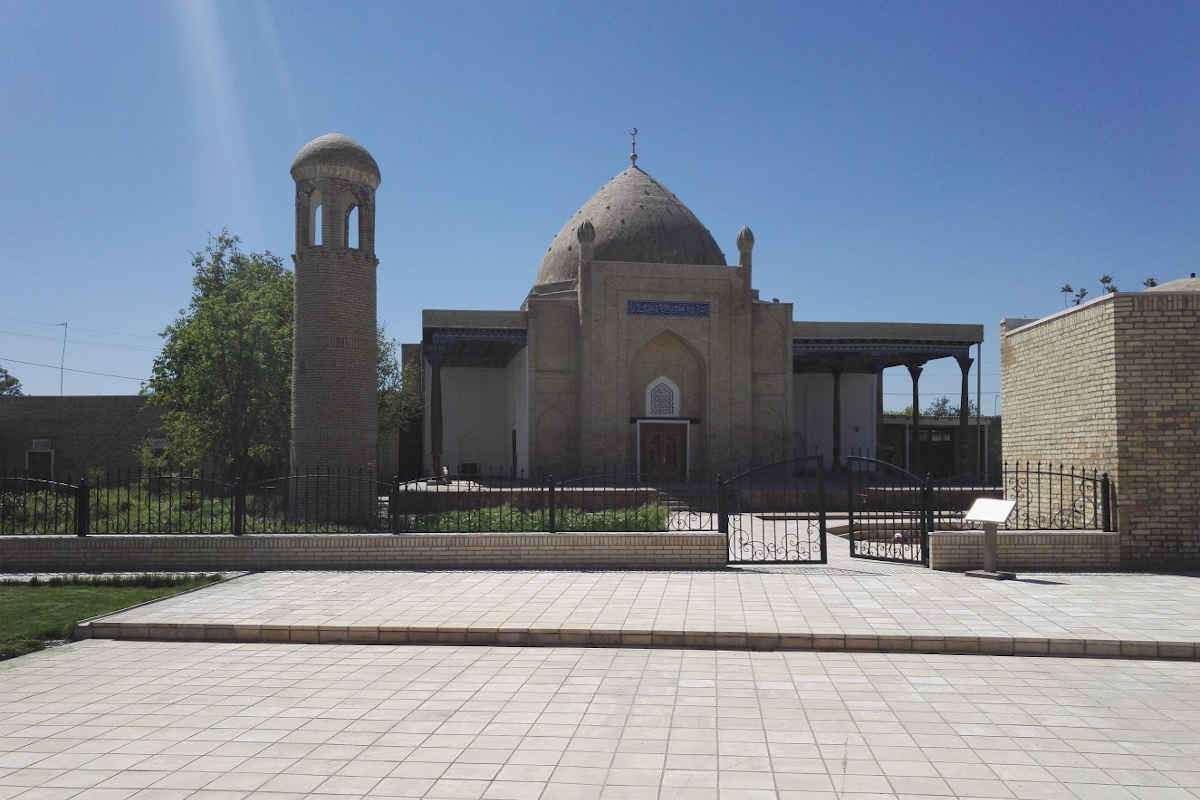Shakhrisabz - Malik Ashtar Mosque

The Malik Ashtar Mosque in Shakhrisabz – a hidden gem of Islamic architecture
In the north-eastern part of the historic centre of Shakhrisabz, nestled between traditional houses and narrow alleyways, stands the historic Malik Ashtar Mosque, a fascinating relic of Islamic architecture. According to tradition, it was built in the immediate vicinity of the grave of Malik Ashtar, an outstanding military leader and close confidant of Imam Ali. Malik Ashtar was one of the most colourful figures in early Islamic history, known for his bravery, loyalty and deep-rooted ethics of justice. His memory is highly revered throughout the Islamic world, and the mosque in Shakhrisabz stands as a testament to his legacy.
The architectural design of the Malik Ashtar Mosque is an impressive example of traditional Central Asian architecture. Similar to the Khanaka of Khojaa Mirhamid, it also served not only as a place of prayer in past centuries, but also as a madrasa – a theological school. This function is reflected in the preserved hujras, the small, dome-roofed cells along the courtyard that once served as living and study rooms for scholars and students.
The architectural concept of the mosque is based on a deep symbolic meaning: the clay prayer hall represents the earth, while the green trees in the courtyard symbolise life. The water basin (‘hausa’) refers to spiritual purity and the majestic dome, which rises towards the sky, symbolises the soul’s ascent to higher levels. The delicately decorated Aiwan columns are particularly impressive and lend the building a special elegance. The slender minaret, which towers above the surrounding buildings, proclaims the omnipresent presence of Islam in the region with its architectural expression.
Shakhrisabz, whose name translates from Persian as ‘green city’, is located around 90 kilometres south of Samarkand and stretches out at the foot of the majestic Hissar and Zeravshan mountains. The city is one of the oldest permanently inhabited settlements in the world, with a history dating back over 3,700 years. Archaeological findings suggest that the region was inhabited as early as 1700 BC. Due to its strategic location, Shakhrisabz has witnessed significant historical events over the centuries: Alexander the Great’s army marched here, the Bactrian satrap Bessos was captured, anti-Arab rebellions flared up, and for centuries caravans of the Great Silk Road travelled through the city.
In ancient times, Shakhrisabz was known as Kesh and later developed into the birthplace of the legendary conqueror Amir Temur (Tamerlan). During his reign, the city became the ‘home residence’ of the Temurids and experienced a period of prosperity. Historical sources show that Shakhrisabz was once larger and more prosperous than neighbouring Samarkand. Monumental buildings such as the Ak-Saray Palace, the Dorus-Saodat Mausoleum and the Dorut-Tilovat Madrasa still bear witness to the former splendour of this city and its outstanding importance in the history of Central Asia.
The Malik Ashtar Mosque in Shakhrisabz, although less well known than the city’s great monuments, remains an important spiritual centre and a hidden gem of Islamic architecture. Despite centuries of the effects of time and nature, restoration work has helped to preserve the original beauty of this building. Today, the Shakhrisabz Municipality is working hard to preserve its historical and cultural monuments. An independent scientific-restoration production workshop has been set up in which architects, designers, master builders and masters of wood and plaster carving work together to restore the original appearance of medieval buildings.
The aim of this interdisciplinary initiative is not merely to reconstruct historical buildings, but above all to preserve their authenticity. The restored structures are not only intended to serve as educational objects for future generations, but also to preserve the unique charm and cultural significance of Shakhrisabz as one of the great centres of Islamic architecture and science.
The Malik Ashtar Mosque is therefore much more than a simple place of worship – it is a place of history, spirituality and artistry. Visitors to this mosque are immersed in a world of legends, harmony and the deep connection between man and faith.
